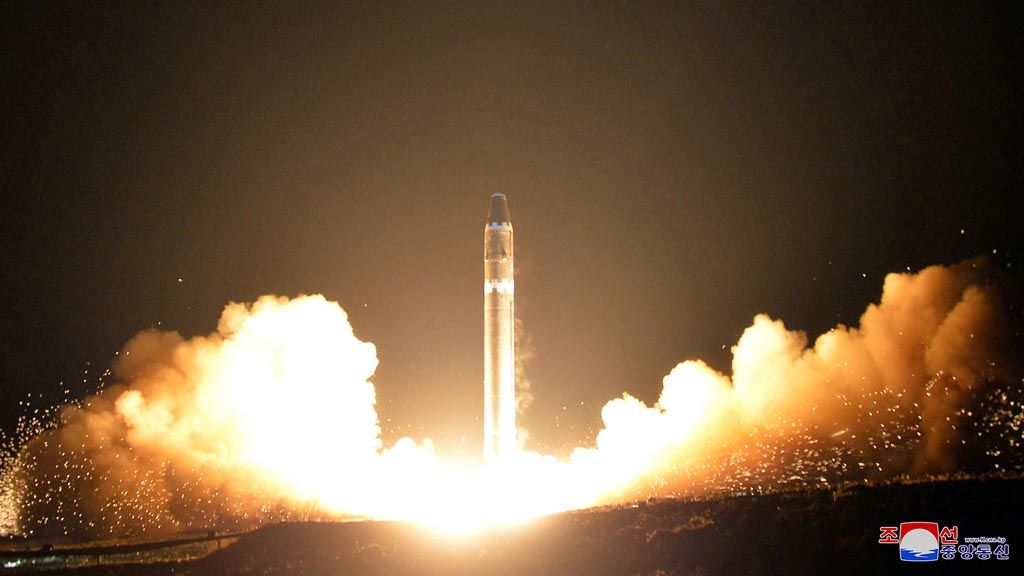Maintaining Optimism in a Turbulent World
The period of peace following the end of World War II is still far too short, compared to the Pax Romana.

This Nov. 29, 2017 file image provided by the North Korean government shows what it calls the Hwasong-15 intercontinental ballistic missile, launching at an undisclosed location in North Korea. The Korean-language logo on the image reads "KCNA", the abbreviation for the Korean Central News Agency. The Japanese Cabinet approved a plan on Dec. 19 to purchase a land-based missile combat system from the US to step up its missile defense capability amid the escalating threat from North Korea. The decision would allow the Defense Ministry to buy a set of two Aegis Ashore systems to add to Japan’s current two-step missile defense consisting of Patriot batteries and Aegis-equipped destroyers. Independent journalists were not given access to cover the event depicted in this image, which cannot be verified.
Since the last big war to affect the entire world ended in 1939-1945, the world has not seen another great armed conflict that involves many countries at once. Seventy-two years has passed since World War II ended. This period of “world peace” has lasted significantly longer than the 20-year interlude between World War I (1914-1918) and World War II.
In Roman history, there was a famous period of peace known as Pax Romana. Spanning from the era of Emperor Augustus to that of Marcus Aurelius, this period lasted more than 200 years (27 BC-180 AD).